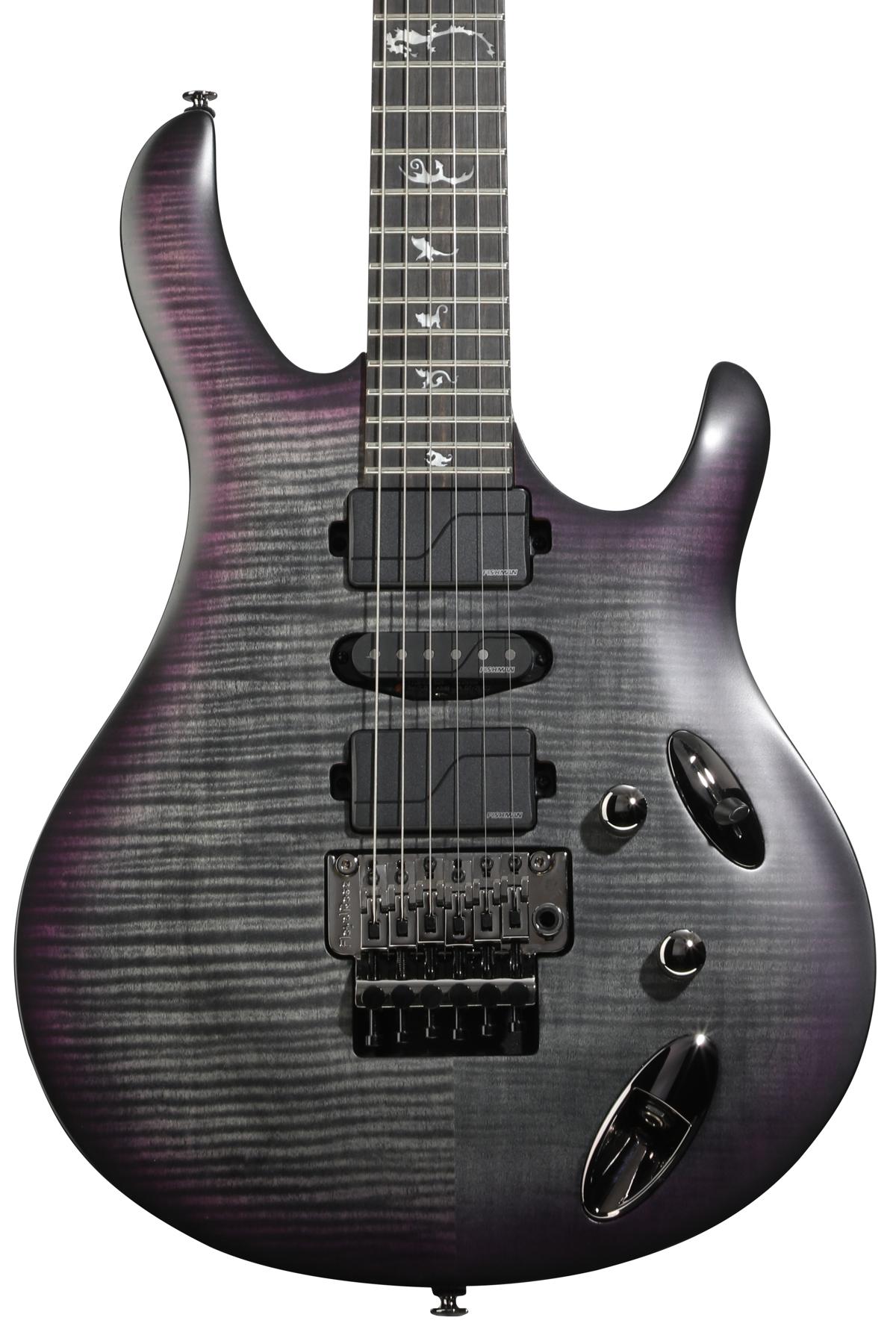PG's Rebecca Dirks is On Location at the 2011 NAMM Show
where she swings by the Mesa/Boogie booth. In this segment, we get our
first demo of the Royal Atlantic 100 RA-100.
Packing 100 watts of EL34 Brit-voiced attitude, this Royal Atlantic
takes everything you love about Fullerton and Liverpool and brings it
all together with rich, chest-thumping high gain in Mesa's traditional
manner.
The RA 100 also features their revolutionary new Channel Assignable
Power Soaks that will redefine for you the concept of Power Expression
and put you in total command of playing volume independent of power
clip. Dial up a preamp sound in each of the Modes and crank in the
perfect amount of power saturation at the right volume - and footswitch
between them seamlessly
Specifications:
- All-Tube Amplifier: 4xEL-34 (or 6L6's), 7x12AX7
- Proprietary Multi-Soakâ„¢, Channel Assignable Power Attenuator provides
each channel with a 5-position power attenuation switch (-16db, -12db,
-8db, -4db & 0db) for Power Ratings ranging from 3 Watts to 100
Watts of Class A/B Power
- Bias Select Switch (6L6/EL34)
- Fixed Bias for Consistent, Maintenance Free Performance
2 Channels, 3 Footswitchable Modes
Each mode with Independent Channel Master & Multi-Soak Power
Controls (Multi-Soak Controls on back panel)
- Channel 1 (Clean) features: Gain, Treble, Mid, Bass, Master &
Multi-Soak (on back panel)
- Channel 2 (Footswitchable Vintage Lo-Gain & Vintage Hi-Gain Modes)
features: Gain, Treble, Mid, Bass, Master-Lo, Master-Hi, Multi-Soak Lo
& Multi-Soak Hi (on back panel)
- All-Tube, Long Spring Reverb with Auto Reverb Defeat Switch for
Vintage Hi or Vintage Hi & Lo Modes ("Defeat" removes Reverb from
selected mode/modes -- "On" applies Reverb to all Modes)
- Reverb Hard-Bypass Switch removes entire Reverb Circuit from amp (all
modes)
- Fully Buffered FX Loop w/Automatic Hard-Bypass, which completely
removes itself when not in use
- Slave Out w/Level Control
- External Switching Jacks for Vintage Low/Hi (Clean is default)
- 22" Aluminum Chassis
- 2 Button Footswitch (Clean, Vintage Low/Hi)
NAMM '11 - Mesa/Boogie Royal Atlantic RA-100 Demo
PG's Rebecca Dirks is On Location at the 2011 NAMM Show where she swings by the Mesa/Boogie booth. In this segment, we get our first demo of the Royal Atlantic 100 RA-100. Packing 100 watts of EL34 Brit-voiced attitude, this Royal Atlantic takes everything you love about Fullerton and Liverpool and brings it all together with rich, chest-thumping high gain in Mesa's traditional manner. The RA 100 also features their revolutionary new Channel Assignable Power Soaks that will redefine for you the concept of Power Expression and put you in total command of playing volume independent of power clip. Dial up a preamp sound in each of the Modes and crank in the perfect amount of power saturation at the right volume - and footswitch between them seamlessly Specifications: - All-Tube Amplifier: 4xEL-34 (or 6L6's), 7x12AX7 - Proprietary Multi-Soak™, Channel Assignable Power Attenuator provides each channel with a 5-position power attenuation switch (-16db, -12db, -8db, -4db & 0db) for Power Ratings ranging from 3 Watts to 100 Watts of Class A/B Power - Bias Select Switch (6L6/EL34) - Fixed Bias for Consistent, Maintenance Free Performance 2 Channels, 3 Footswitchable Modes Each mode with Independent Channel Master & Multi-Soak Power Controls (Multi-Soak Controls on back panel) - Channel 1 (Clean) features: Gain, Treble, Mid, Bass, Master & Multi-Soak (on back panel) - Channel 2 (Footswitchable Vintage Lo-Gain & Vintage Hi-Gain Modes) features: Gain, Treble, Mid, Bass, Master-Lo, Master-Hi, Multi-Soak Lo & Multi-Soak Hi (on back panel) - All-Tube, Long Spring Reverb with Auto Reverb Defeat Switch for Vintage Hi or Vintage Hi & Lo Modes ("Defeat" removes Reverb from selected mode/modes -- "On" applies Reverb to all Modes) - Reverb Hard-Bypass Switch removes entire Reverb Circuit from amp (all modes) - Fully Buffered FX Loop w/Automatic Hard-Bypass, which completely removes itself when not in use - Slave Out w/Level Control - External Switching Jacks for Vintage Low/Hi (Clean is default) - 22" Aluminum Chassis - 2 Button Footswitch (Clean, Vintage Low/Hi)
By PremierGuitar DefaultJan 18, 2011






![Rig Rundown: Russian Circles’ Mike Sullivan [2025]](https://www.premierguitar.com/media-library/youtube.jpg?id=62303631&width=1245&height=700&quality=70&coordinates=0%2C0%2C0%2C0)


























